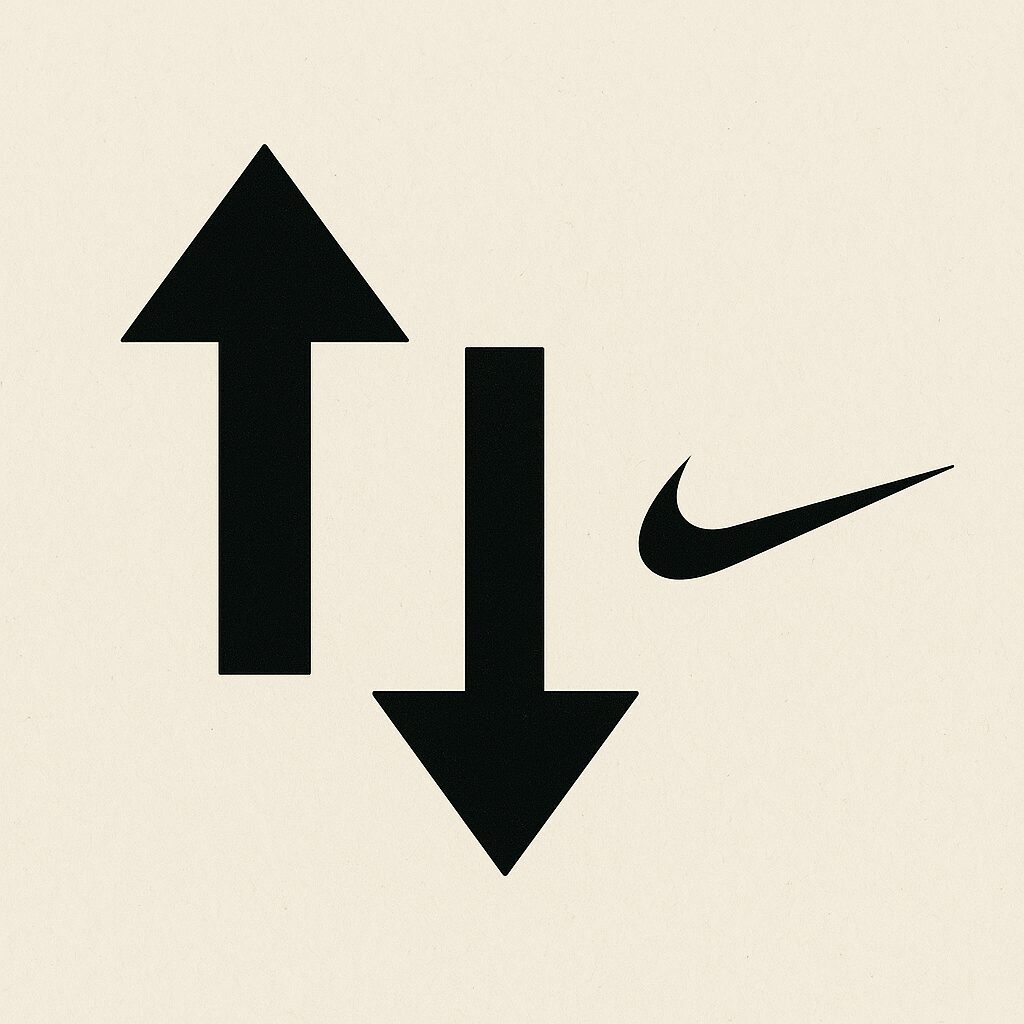
Once the gold standard in brand marketing, Nike has spent decades turning “Just Do It” into a cultural movement. But even titans stumble.
In a world increasingly obsessed with dashboards, KPIs and ROI, Nike made a bold pivot: away from the brand-led strategies that built its empire, and towards performance marketing. That is—ads designed to drive direct response, not emotion. The goal? Fast sales. Measurable results. Attribution heaven.
At first, it worked.
But like most short-term sugar hits, the crash was inevitable.
The Pivot: From Cultural Relevance to Click Conversion
Around the early 2020s, Nike began to significantly dial down brand advertising in favour of digital performance tactics. Retail partners were cut. The DTC (Direct to Consumer) play became king. Budgets shifted. Email, social, and programmatic display became the new frontline of Nike’s comms.
For a brand that once dominated global consciousness with attitude, emotion and story, this was a hard swerve into transactional territory.
The trouble? Brands aren’t built with CTAs and coupon codes.
Short-Term Wins, Long-Term Erosion
Sure, traffic went up. Online sales got a bump. But something else happened too: Nike’s cultural cachet started to fade.
Reports surfaced showing Nike’s “brand momentum” declining—even as sales held temporarily strong [1]. It began to lose its place in the cultural conversation. Competitors like Adidas, On Running and Hoka began closing the gap, not just in sales—but in salience and meaning.
This isn’t just a Nike story. It’s a law of marketing physics.
The Data Is In: Brand Building Drives Growth
James Hurman and Peter Field—two of the most respected marketing effectiveness researchers alive—have both spoken out about this [2].
Field, co-author of The Long and the Short of It, found that a brand needs a roughly 60:40 investment ratio in brand building vs performance to maximise growth. Yet Nike appeared to swing the pendulum far toward performance—by some accounts, up to 80% [3].
The result? Declining brand equity. Stagnating market share. And a weakened shield in times of competitive pressure.
This isn’t theory—it’s evidence. Brand investment:
• Drives mental availability (being thought of at the right time)
• Sustains pricing power
• Fuels long-term sales growth
• Builds resilience during downturns
Even the short-term campaigns work better when backed by strong brand memory structures [4].
Airbnb Did the Opposite
In contrast, Airbnb did something radically different. They cut performance spend and increased brand spend—and grew faster. (We covered that story in detail [5].)
Why the difference? Because Airbnb leaned into what performance-first thinkers often forget: demand creation beats demand capture. Every. Time.
The Course Correction
Nike, to its credit, appears to be noticing. There’s talk of a renewed emphasis on storytelling and community. They’re realising that you can’t just performance your way to preference.
Brand is not a cost. It’s capital.
What This Means for You
If you’re a founder, CMO, or strategist—take this as a warning flare. Performance is addictive. But without a brand, all you’re doing is speeding up the churn.
Yes, you need sales now. But unless your long game is strong, those sales will dry up. When the culture forgets you, the spreadsheet soon follows.
Nike’s stumble reminds us of a truth marketers often know but forget: you can’t optimise your way into people’s hearts.
Sources
1. Morgan Stanley (2023). “Nike: Losing Momentum on Brand.”
2. Hurman, J. (2024). “The Great Advertisers Do Underperform the Market”
3. Adweek (2023). “Nike’s Digital DTC Play: All-In on Performance?”
4. Binet, L. & Field, P. (2013). The Long and the Short of It. IPA.
5. Shepherd® (2024). “Why Airbnb Grew Faster When They Cut Performance Marketing.”

